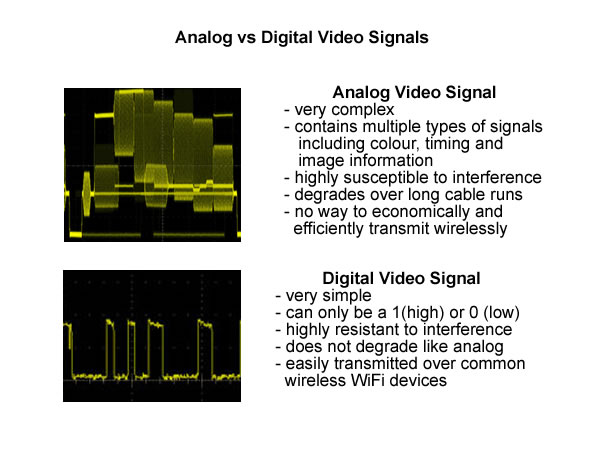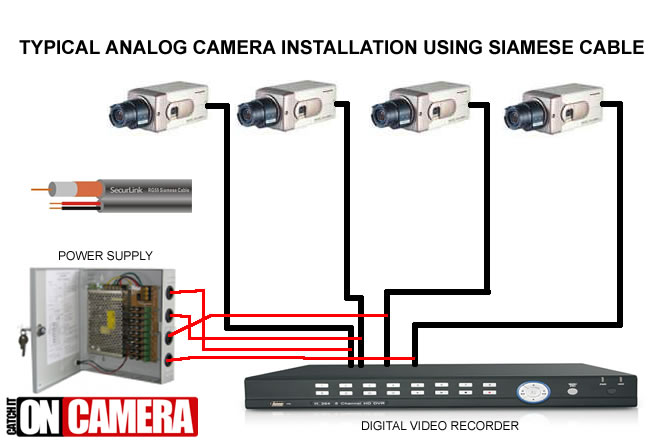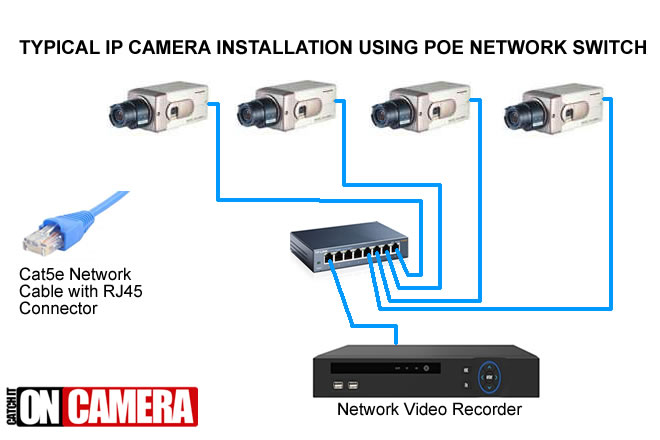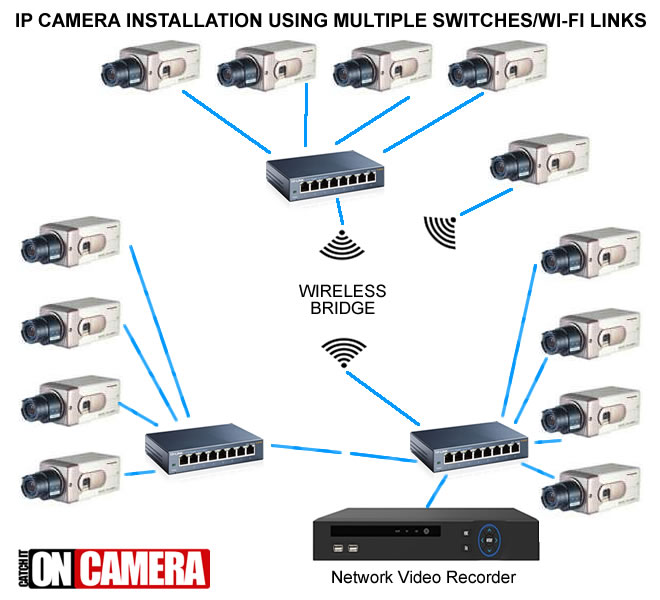The Evolution of CCTV Security/Surveillance Cameras
CCTV is an acronym for “Closed Circuit TV”. In other words, video cameras that are not broadcast over the air like traditional TV signals, but rather connected by wires to a central monitoring station. The first documented use of CCTV was the German military in 1942 who used it to monitor V2 rocket launches. Today, CCTV is a term that can apply to variety of technologies, including wireless and wired cameras, all connected to a central recording/monitoring device.
Some of the earliest commercially available CCTV systems were live-view only - there was no economical means of recording and required personnel to constantly watch the video feeds. The advent of consumer grade video cassette recorders marked a significant change in allowing low-cost recording - even though initially they were limited to a single camera. Eventually video multiplexers were developed, allowing a single VCR to record multiple cameras at the same time.
With the advent of personal computers, it was inevitable that imaging technology would eventually be integrated with a computer. In the late 1990s and early 2000s, such systems became commonplace. One big advantage of adding computing power were analytics - the ability to analyze the video signals in real time to allow for things like motion detection, object detection, and even advanced things like facial recognition and license plate reading. Many computer based systems also allowed for remote access - allowing you to log in and watch the cameras or review footage over the internet. One huge downside with integrating CCTV with computers was inheriting all of the problems a computer could experience - nothing could be more frustrating than finding your surveillance system hung up in the notorious “blue screen of death” and therefore not recording when a major incident occurred.
The next major development in CCTV technology was the standalone digital video recorder (DVR). This replaced computers with a dedicated system that was specifically designed for one purpose: digitizing and recording analog video signals. DVRs increased reliability while lowering costs, and as well as eventually offering advanced remote monitoring options such as smartphone viewing, which became standard in all DVRs around 2010.
Despite all the advances in recording technology there remained one major limitation in analog based CCTV systems - resolution. Although there were some minor advancements from early cameras, analog resolution hit a brick wall with Sony’s release of Effio based CCD sensors around 2012 - featuring 960×480 images.
While analog cameras dominated the market, pure digital cameras were slowly gaining acceptance and continued to reach new milestones. Eventually development started to merge the two technologies and resulted in what is commonly referred to as “Analog HD” - which did offer improvements in resolution, but inherited many of the shortcomings of traditional analog systems - such as hardwired cameras only and susceptibility to interference in the cabling carrying the signals to the recorder.

Why are digital signals so much better than analog? Looking at a graphical depiction of the signals we can see that analog signals are very complex. Because of the complexity, external signals can easily interfere with parts of the signal causing distortion, noise or other anomalies in the images received. Over long distance cable runs, the signals can weaken, again changing the image quality. Digital signals on the other hand are very simple - the signal is either “high” (1) or “low” (0), and are not easily influenced by outside signals unless they are very close and very strong. They are also highly reliable over long cable runs (120m) and can easily be transmitted over wireless devices where running cables is impractical.
 Analog systems - whether legacy or more modern HD over BNC technologies - suffer from several drawbacks when it comes to installation and deployment. First, and most importantly, each camera must be connected directly to the recording device by an uninterrupted run of cable. Typically, a “siamese cable” consisting of a coaxial cable and a pair of power wires is used. The coaxial cable carries the video signal to the recorder, and the power wires are connected to a separate power supply, typically located close to the recorder. There is no easy or economical way to wirelessly connect analog cameras, a major drawback.
Analog systems - whether legacy or more modern HD over BNC technologies - suffer from several drawbacks when it comes to installation and deployment. First, and most importantly, each camera must be connected directly to the recording device by an uninterrupted run of cable. Typically, a “siamese cable” consisting of a coaxial cable and a pair of power wires is used. The coaxial cable carries the video signal to the recorder, and the power wires are connected to a separate power supply, typically located close to the recorder. There is no easy or economical way to wirelessly connect analog cameras, a major drawback.

Pure digital cameras, more commonly known as network or IP cameras, present many advantages over traditional analog and analog HD varieties. The most significant is higher resolutions, allowing for much more detailed images to be captured. This makes identifying subjects or objects much easier, and allows for even more advanced analytics such as automatic facial recognition and automated license plate reading. Installation is typically easier, as the both the power and video signals can all be carried over a single network cable when a POE (Power Over Ethernet) switch or other methods of injecting the power to the camera(s) is utilized. This eliminates the need for an extra power supply and wiring that is necessary in all analog installations.

Aside from the advantages of running only a single cable using POE technology, digital IP cameras are networked in the same way as computers are. This allows for much more flexibility and ease system design. For example, a company has an office and a warehouse. Rather than running all the wires from each camera back to the recorder in the office, a single network wire can carry multiple cameras from a network switch in the warehouse to the office where another switch connected the office cameras. Perhaps there is an outbuilding a few hundred feet away - a wireless bridge and switch is used to connect to multiple cameras at that location. Maybe a single camera is needed in the parking lot, connected by WiFi, to capture license plates of all vehicles entering/exiting the main driveway. This is all accomplished easily and effectively with digital IP cameras and cannot be easily done using traditional analog or analog HD style cameras without trenching and extremely long cable runs.
At Catch It On Camera we aim to fully leverage the advantages of digital cameras for our customers advantage. As the technology has improved, the prices of digital IP cameras has dropped so that they are now in the same price range as analog cameras were only a few years ago. We do still stock and sell legacy analog and analog HD cameras and recorders for clients who have older systems, or when a client wants to upgrade without rewiring the premises. Our preferred Analog HD technology is TV-I, as it is the most robust, least susceptible to interference and works on longer cable runs.




